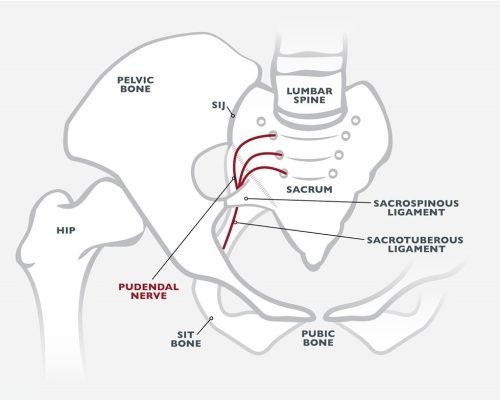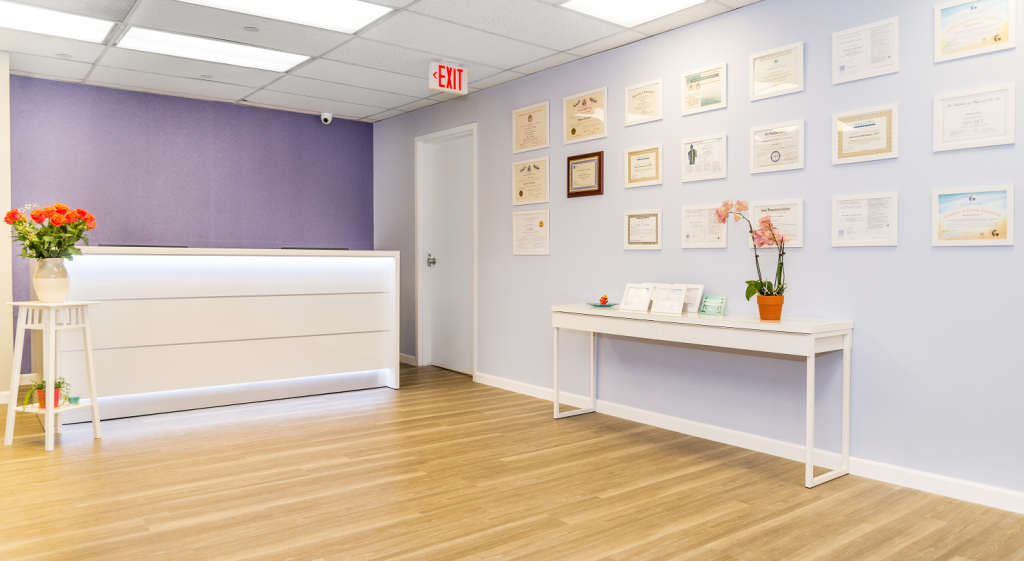Our Doctors of Physical Therapy will develop a customized treatment plan for you in a private setting.

What Is Pudendal Neuralgia?
Pudendal Neuralgia is a chronic pain resulting from injury, compression or irritation to the pudendal nerve. The pudendal nerve is a main nerve of the pelvis and originates from the lower back, and runs along pelvic floor muscles, out to the perineum (between pubic bone and tailbone). Pudendal Neuralgia is also referred to as Cyclist’s Syndrome, Pudendal Canal Syndrome, or Alcock Canal Syndrome.
The pudendal nerve runs through your pelvic region, including your clitoris, urethra, and anus. As a result, pudendal neuralgia can make it hard to use the bathroom, have sex, or sit down.
Without treatment, over time there may be a progressive worsening of symptoms.
What Causes Pudendal Neuralgia?
The nerves throughout the body are supple and slide smoothly with movement. Gentle pressure on nerves causes “pins and needles” but they recover quickly once pressure is released. However, the nerve can become traumatized and irritated, or compressed by bulky pelvic floor muscles or tight ligaments.
There is no one cause of pudendal neuralgia. It may be related to:
Childbirth trauma
Past pelvic or perineal trauma
Gynaecological or colo-rectal surgery
Cycling or spinning
Excessive physical exercise or heavy lifting
Poor postural habits, Stress
What are the Symptoms of Pudendal Neuralgia?
The main symptom of Pudendal Neuralgia is pelvic pain. More specifically, any areas supplied by the pudendal nerve can be affected. The following painful symptoms may also occur:
Sensations – A burning, stinging, shooting, “fork like” or prickling sensation which can develop gradually or suddenly
Pain can become constant or vary with activity or position
Pain can worsen with sitting and improve when standing or lying down
Increased sensitivity to pain – just a light touch or wearing clothes can be uncomfortable.
Bowel, bladder and sexual dysfunctions.
How Can Physical Therapy Help?
A thorough examination is key to diagnosing and treating pudendal neuralgia. A neurological and musculoskeletal examination of pelvis, lower back and legs can help find dysfunction and a specific treatment plan can be designed.
Our physical therapy plan may utilize any combination of following treatment methods:
Pudendal Nerve mobilization – To improve nerve’s ability to glide and release restrictions along the distribution path
Trigger point inhibition – Common muscles involved are deep pelvic floor muscles causing compression on the pudendal nerve. Trigger point inhibition can help relax these tight muscles
Relaxation techniques – Using diaphragmatic breathing to enhance the connection with pelvic floor muscles and achieved better resting tone in hypertonic pelvic muscles
Stretching Exercise – To improved flexibility of lower back, leg and pelvic muscles
Postural Education – Especially sitting posture to reduce further stress on pudendal nerve
Do You Accept Health Insurance?
We accept PPO/POS plans for most insurance companies. Although most insurance companies cover physical therapy, what they cover varies greatly. Please call us at 201-366-1116 or complete below form so we can verify your specific plan benefits.






Patient Testimonials

Participating member of world renowned
Hospital for Special Surgery & Mount Sinai.
NY & NJ’s leading doctors trust us with the care of their patients
Pudendal Neuralgia Treatment Near Me
Liberty Physical Therapy is the largest and state-of-the-art physical therapy center with 8 private treatment rooms. The first and only practice in Jersey City that provides comprehensive Women’s Pelvic Floor Therapy. Conveniently located in the heart of Jersey City, next to Grove Street Path Station, we are just 10 minutes from Hoboken, Manhattan & Bayonne. We are a team of specialists with several years of experience successfully treating Pudendal Neuralgia. We will work closely with your doctor to create a specific plan for you, with the goal of returning you back to enjoying your social, home and work activities.

